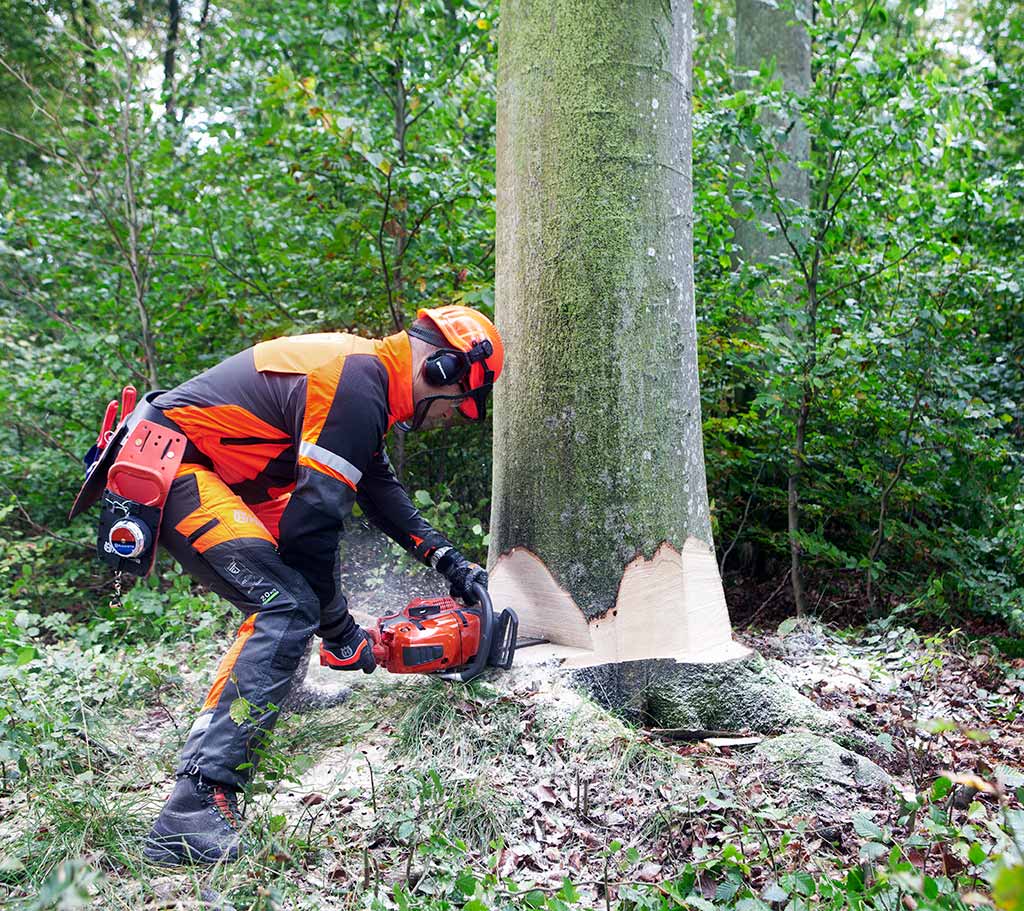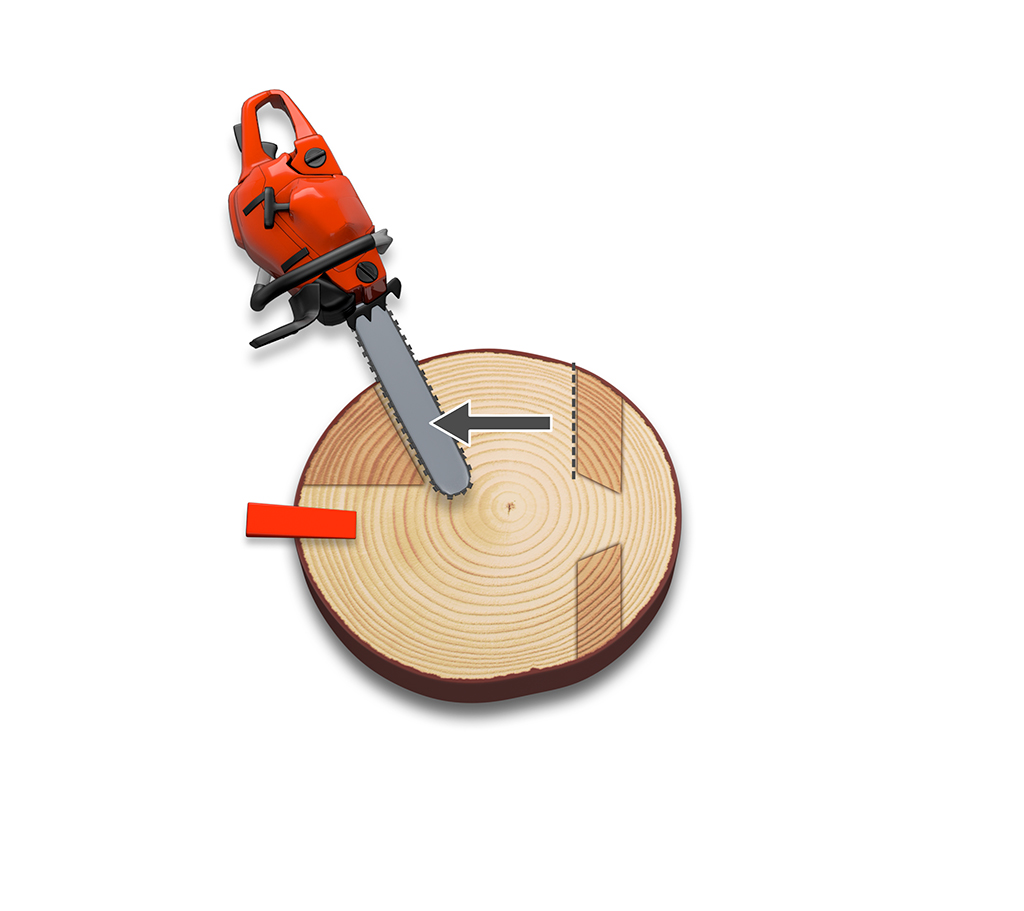Split and crack prone tree species
Splits in the trunks are primarily caused by the internal natural tension in the wood on hard or very hard wood, such as beech. During felling or cutting much of the tension is released. Wood that splits during felling can be a major safety hazard. Split wood can also result in timber losses and, consequently, financial losses. Here are two methods you can use to avoid splitting.
Higher felling cut
One way to avoid splitting the wood is to make the felling cut at a level higher than the directional notch. The hinge should be thicker than normal to avoid the risk of sawing off curved fibres in the trunk. With this method, you do not have optimal control of the tree, since the lip, created when sawing the felling cut, releases rather early in the felling operation.
Inverse directional notch, “Humboldt”
Another way to avoid splitting the wood is to make an inverse directional notch. This method requires that the felling cut is not higher up than normal, which is better from a safety aspect. Just make sure that the two cuts needed for sawing the directional notch meet exactly.
Wood splitting and tension can result in serious injury or death. Follow instructions carefully.
Root protrusions and “ears”
Root protrusions always represent a risk for splitting and should be cut off if they are to the sides. Some tree species can split without having any root protrusions. You can then make a few saw cuts, known as ears: Add a saw cut on each side of the hinge ensuring no fibre is pulled out splitting the edges. However, root protrusions should not be sawn off if the tree is leaning across the direction of felling, as the felling hinge’s lateral strength will be weakened.
Bore in directional notch
Some tree species such as beech may have high tension in the core (trunk centre). This may cause the wood fibres to be pulled out of the wood when felling. One way to prevent this is to make a bore in the directional notch and saw off the core before starting the felling cut. As part of the hinge is sawn off, the remaining part can be made slightly thicker. Beware of kickback when making the bore! The method is also used on very thick trees with diameters up to twice the length of the guide bar.



